Abstract:
In this paper, we investigate the uplink communication of a reconfigurable intelligent surface (RIS) assisted system, in which an user equipment (UE) with single radio fr...Show MoreMetadata
Abstract:
In this paper, we investigate the uplink communication of a reconfigurable intelligent surface (RIS) assisted system, in which an user equipment (UE) with single radio frequency (RF) chain delivers information to an access point (AP) by adopting the spatial modulation (SM). Specifically, we first investigate the transmit SM (TSM) scheme and jointly optimize the UE’s power allocation matrix and the RIS reflection coefficients to enhance the system reliability. We formulate a non-convex optimization problem to reduce the system symbol-error-rate (SER) and propose a novel penalty-alternative optimizing algorithm to obtain a near-optimal solution. Following this, we show that with the assistant of RIS, receive SM (RSM) scheme can also be performed even if the UE has only one RF chain. Based on this observation, a novel RIS-assisted RSM scheme is proposed, which can provide a low cost and complexity solution for system realization. The reflection coefficients of the RIS are also optimized for the proposed RSM. Numerical results show that the RIS-assisted TSM can achieve a lower SER than the conventional communication scheme (CTS) without SM and the proposed RSM scheme has lower detection complexity than that of CTS. It is also shown that the performance of the TSM and RSM schemes is more sensitive to the quantization accuracy of the phase of the RIS coefficients than that of the amplitude.
Published in: IEEE Transactions on Communications ( Volume: 69, Issue: 10, October 2021)
Funding Agency:
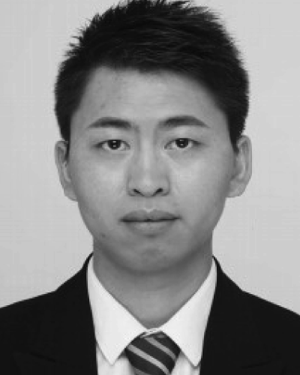
College of Computer Science and Software Engineering, Shenzhen University, Shenzhen, China
Sheng Luo (Member, IEEE) received the B.Eng. and M.Eng. degrees in communication engineering from the University of Electronic Science and Technology of China, Chengdu, China, in 2009 and 2012, respectively, and the Ph.D. degree in communication engineering from Nanyang Technological University, Singapore, in 2017. Since December 2017, he has been with Shenzhen University (SZU), where he is currently an Assistant Professo...Show More
Sheng Luo (Member, IEEE) received the B.Eng. and M.Eng. degrees in communication engineering from the University of Electronic Science and Technology of China, Chengdu, China, in 2009 and 2012, respectively, and the Ph.D. degree in communication engineering from Nanyang Technological University, Singapore, in 2017. Since December 2017, he has been with Shenzhen University (SZU), where he is currently an Assistant Professo...View more
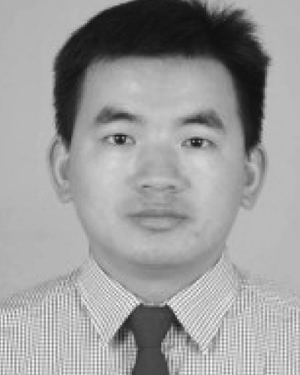
National Key Laboratory of Science and Technology on Communication, University of Electronic Science and Technology of China, Chengdu, China
Ping Yang (Senior Member, IEEE) received the Ph.D. degree from the University of Electronic Science and Technology of China, Chengdu, Sichuan, in 2013. From 2012 to 2013, he was a Visiting Student with the School of Electronics and Computer Science, University of Southampton, U.K. From 2014 to 2016, he was a Research Fellow with the School of Electrical and Electronic Engineering, Nanyang Technological University, Singapo...Show More
Ping Yang (Senior Member, IEEE) received the Ph.D. degree from the University of Electronic Science and Technology of China, Chengdu, Sichuan, in 2013. From 2012 to 2013, he was a Visiting Student with the School of Electronics and Computer Science, University of Southampton, U.K. From 2014 to 2016, he was a Research Fellow with the School of Electrical and Electronic Engineering, Nanyang Technological University, Singapo...View more
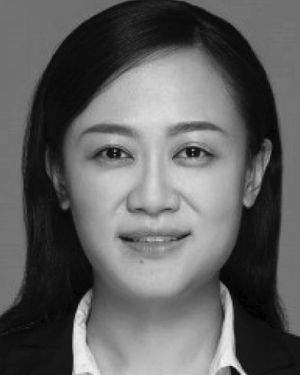
College of Computer Science and Software Engineering, Shenzhen University, Shenzhen, China
Yueling Che (Member, IEEE) received the B.Eng. and M.Phil. degrees in electrical engineering from the University of Electronic Science and Technology of China in 2006 and 2009, respectively, and the Ph.D. degree in electrical engineering from Nanyang Technological University, Singapore, in 2014. From 2014 to 2016, she was a Post-Doctoral Research Fellow in engineering systems and design pillar with the Singapore Universit...Show More
Yueling Che (Member, IEEE) received the B.Eng. and M.Phil. degrees in electrical engineering from the University of Electronic Science and Technology of China in 2006 and 2009, respectively, and the Ph.D. degree in electrical engineering from Nanyang Technological University, Singapore, in 2014. From 2014 to 2016, she was a Post-Doctoral Research Fellow in engineering systems and design pillar with the Singapore Universit...View more

College of Electronics and Information Engineering, Shenzhen University, Shenzhen, China
Kun Yang is currently pursuing the bachelor’s degree in electronic science and technology with Shenzhen University. His current research interests include wireless communications, simultaneous wireless information and power transfer, and intelligent reflecting surface.
Kun Yang is currently pursuing the bachelor’s degree in electronic science and technology with Shenzhen University. His current research interests include wireless communications, simultaneous wireless information and power transfer, and intelligent reflecting surface.View more
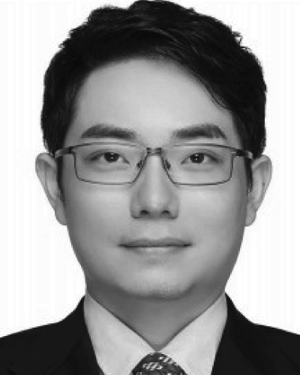
College of Computer Science and Software Engineering, Shenzhen University, Shenzhen, China
Kaishun Wu (Senior Member, IEEE) received the Ph.D. degree in computer science and engineering from HKUST in 2011. After that, he worked as a Research Assistant Professor at HKUST. In 2013, he was a Distinguished Professor with Shenzhen University (SZU). He has coauthored two books and published over 90 high-quality research papers in international leading journals and premier conferences, like IEEE Transactions on Mobile...Show More
Kaishun Wu (Senior Member, IEEE) received the Ph.D. degree in computer science and engineering from HKUST in 2011. After that, he worked as a Research Assistant Professor at HKUST. In 2013, he was a Distinguished Professor with Shenzhen University (SZU). He has coauthored two books and published over 90 high-quality research papers in international leading journals and premier conferences, like IEEE Transactions on Mobile...View more
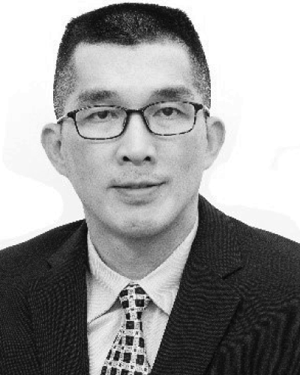
School of Electrical and Electronic Engineering, Nanyang Technological University, Singapore
Kah Chan Teh (Senior Member, IEEE) received the B.Eng. and Ph.D. degrees in electrical engineering from Nanyang Technological University (NTU), Singapore, in 1995 and 1999, respectively. Since July 1999, he has been with NTU, where he is currently an Associate Professor with the School of Electrical and Electronic Engineering (EEE). He is also appointed as an Assistant Chair (Students) with the School of EEE. He has publi...Show More
Kah Chan Teh (Senior Member, IEEE) received the B.Eng. and Ph.D. degrees in electrical engineering from Nanyang Technological University (NTU), Singapore, in 1995 and 1999, respectively. Since July 1999, he has been with NTU, where he is currently an Associate Professor with the School of Electrical and Electronic Engineering (EEE). He is also appointed as an Assistant Chair (Students) with the School of EEE. He has publi...View more
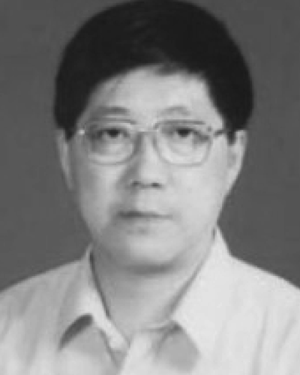
National Key Laboratory of Science and Technology on Communication, University of Electronic Science and Technology of China, Chengdu, China
Shaoqian Li (Fellow, IEEE) received the B.S.E. degree in communication technology from the Northwest Institute of Telecommunication, Xidian University, in 1982, and the M.S.E. degree in communication system from UESTC in 1984. He is currently a Professor, a Ph.D. Supervisor, and the Director of the National Key Lab of Communication. He is the Director of the School of Communication and Information Engineering, UESTC. He i...Show More
Shaoqian Li (Fellow, IEEE) received the B.S.E. degree in communication technology from the Northwest Institute of Telecommunication, Xidian University, in 1982, and the M.S.E. degree in communication system from UESTC in 1984. He is currently a Professor, a Ph.D. Supervisor, and the Director of the National Key Lab of Communication. He is the Director of the School of Communication and Information Engineering, UESTC. He i...View more

College of Computer Science and Software Engineering, Shenzhen University, Shenzhen, China
Sheng Luo (Member, IEEE) received the B.Eng. and M.Eng. degrees in communication engineering from the University of Electronic Science and Technology of China, Chengdu, China, in 2009 and 2012, respectively, and the Ph.D. degree in communication engineering from Nanyang Technological University, Singapore, in 2017. Since December 2017, he has been with Shenzhen University (SZU), where he is currently an Assistant Professor with the College of Computer Science and Software Engineering. His current research interests are in the areas of cooperative communication, wireless information and power transfer, mmWave communication, and spatial modulation.
Sheng Luo (Member, IEEE) received the B.Eng. and M.Eng. degrees in communication engineering from the University of Electronic Science and Technology of China, Chengdu, China, in 2009 and 2012, respectively, and the Ph.D. degree in communication engineering from Nanyang Technological University, Singapore, in 2017. Since December 2017, he has been with Shenzhen University (SZU), where he is currently an Assistant Professor with the College of Computer Science and Software Engineering. His current research interests are in the areas of cooperative communication, wireless information and power transfer, mmWave communication, and spatial modulation.View more

National Key Laboratory of Science and Technology on Communication, University of Electronic Science and Technology of China, Chengdu, China
Ping Yang (Senior Member, IEEE) received the Ph.D. degree from the University of Electronic Science and Technology of China, Chengdu, Sichuan, in 2013. From 2012 to 2013, he was a Visiting Student with the School of Electronics and Computer Science, University of Southampton, U.K. From 2014 to 2016, he was a Research Fellow with the School of Electrical and Electronic Engineering, Nanyang Technological University, Singapore. He is currently a Full Professor with the University of Electronic Science and Technology of China. He has published and presented more than 90 articles in journals and conference proceedings. His research interests include MIMO, orthogonal frequency division multiplexing, machine learning, and communication signal processing. He is an Editor of IEEE Communications Letters.
Ping Yang (Senior Member, IEEE) received the Ph.D. degree from the University of Electronic Science and Technology of China, Chengdu, Sichuan, in 2013. From 2012 to 2013, he was a Visiting Student with the School of Electronics and Computer Science, University of Southampton, U.K. From 2014 to 2016, he was a Research Fellow with the School of Electrical and Electronic Engineering, Nanyang Technological University, Singapore. He is currently a Full Professor with the University of Electronic Science and Technology of China. He has published and presented more than 90 articles in journals and conference proceedings. His research interests include MIMO, orthogonal frequency division multiplexing, machine learning, and communication signal processing. He is an Editor of IEEE Communications Letters.View more

College of Computer Science and Software Engineering, Shenzhen University, Shenzhen, China
Yueling Che (Member, IEEE) received the B.Eng. and M.Phil. degrees in electrical engineering from the University of Electronic Science and Technology of China in 2006 and 2009, respectively, and the Ph.D. degree in electrical engineering from Nanyang Technological University, Singapore, in 2014. From 2014 to 2016, she was a Post-Doctoral Research Fellow in engineering systems and design pillar with the Singapore University of Technology and Design. She is currently an Assistant Professor with the College of Computer Science and Software Engineering, Shenzhen University (SZU). She is a Leading Member of the IoT Research Center, SZU. Her research interests include energy-efficient wireless communications, wireless information and power transfer, UAV-enabled mobile communications, mmWave communication systems, cognitive radio, and stochastic modeling and optimization methods.
Yueling Che (Member, IEEE) received the B.Eng. and M.Phil. degrees in electrical engineering from the University of Electronic Science and Technology of China in 2006 and 2009, respectively, and the Ph.D. degree in electrical engineering from Nanyang Technological University, Singapore, in 2014. From 2014 to 2016, she was a Post-Doctoral Research Fellow in engineering systems and design pillar with the Singapore University of Technology and Design. She is currently an Assistant Professor with the College of Computer Science and Software Engineering, Shenzhen University (SZU). She is a Leading Member of the IoT Research Center, SZU. Her research interests include energy-efficient wireless communications, wireless information and power transfer, UAV-enabled mobile communications, mmWave communication systems, cognitive radio, and stochastic modeling and optimization methods.View more

College of Electronics and Information Engineering, Shenzhen University, Shenzhen, China
Kun Yang is currently pursuing the bachelor’s degree in electronic science and technology with Shenzhen University. His current research interests include wireless communications, simultaneous wireless information and power transfer, and intelligent reflecting surface.
Kun Yang is currently pursuing the bachelor’s degree in electronic science and technology with Shenzhen University. His current research interests include wireless communications, simultaneous wireless information and power transfer, and intelligent reflecting surface.View more

College of Computer Science and Software Engineering, Shenzhen University, Shenzhen, China
Kaishun Wu (Senior Member, IEEE) received the Ph.D. degree in computer science and engineering from HKUST in 2011. After that, he worked as a Research Assistant Professor at HKUST. In 2013, he was a Distinguished Professor with Shenzhen University (SZU). He has coauthored two books and published over 90 high-quality research papers in international leading journals and premier conferences, like IEEE Transactions on Mobile Computing (TMC), IEEE Transactions on Parallel and Distributed Systems (TPDS), ACM MobiCom, and IEEE INFOCOM. He is the inventor of six U.S. and over 80 Chinese pending patents. He is a fellow of IET. He received the 2012 Hong Kong Young Scientist Award, the 2014 Hong Kong ICT Award for Best Innovation, and the 2014 IEEE ComSoc Asia-Pacific Outstanding Young Researcher Award.
Kaishun Wu (Senior Member, IEEE) received the Ph.D. degree in computer science and engineering from HKUST in 2011. After that, he worked as a Research Assistant Professor at HKUST. In 2013, he was a Distinguished Professor with Shenzhen University (SZU). He has coauthored two books and published over 90 high-quality research papers in international leading journals and premier conferences, like IEEE Transactions on Mobile Computing (TMC), IEEE Transactions on Parallel and Distributed Systems (TPDS), ACM MobiCom, and IEEE INFOCOM. He is the inventor of six U.S. and over 80 Chinese pending patents. He is a fellow of IET. He received the 2012 Hong Kong Young Scientist Award, the 2014 Hong Kong ICT Award for Best Innovation, and the 2014 IEEE ComSoc Asia-Pacific Outstanding Young Researcher Award.View more

School of Electrical and Electronic Engineering, Nanyang Technological University, Singapore
Kah Chan Teh (Senior Member, IEEE) received the B.Eng. and Ph.D. degrees in electrical engineering from Nanyang Technological University (NTU), Singapore, in 1995 and 1999, respectively. Since July 1999, he has been with NTU, where he is currently an Associate Professor with the School of Electrical and Electronic Engineering (EEE). He is also appointed as an Assistant Chair (Students) with the School of EEE. He has published more than 130 internationally refereed journal articles, mostly in the top-tier IEEE Transactions. His research interests are in the areas of 5G and beyond 5G technology, deep learning for wireless communication systems, signal processing for communications, cognitive radios, cooperative communication systems, cybersecurity, and radar. He received the Best Teacher of the Year Award in 2005 and the Nanyang Education Award (School) in 2014 and 2019.
Kah Chan Teh (Senior Member, IEEE) received the B.Eng. and Ph.D. degrees in electrical engineering from Nanyang Technological University (NTU), Singapore, in 1995 and 1999, respectively. Since July 1999, he has been with NTU, where he is currently an Associate Professor with the School of Electrical and Electronic Engineering (EEE). He is also appointed as an Assistant Chair (Students) with the School of EEE. He has published more than 130 internationally refereed journal articles, mostly in the top-tier IEEE Transactions. His research interests are in the areas of 5G and beyond 5G technology, deep learning for wireless communication systems, signal processing for communications, cognitive radios, cooperative communication systems, cybersecurity, and radar. He received the Best Teacher of the Year Award in 2005 and the Nanyang Education Award (School) in 2014 and 2019.View more

National Key Laboratory of Science and Technology on Communication, University of Electronic Science and Technology of China, Chengdu, China
Shaoqian Li (Fellow, IEEE) received the B.S.E. degree in communication technology from the Northwest Institute of Telecommunication, Xidian University, in 1982, and the M.S.E. degree in communication system from UESTC in 1984. He is currently a Professor, a Ph.D. Supervisor, and the Director of the National Key Lab of Communication. He is the Director of the School of Communication and Information Engineering, UESTC. He is a member of the National High Technology Research and Development Program (863 Program) Communications Group. His research interests include wireless communication theory, anti-interference technology for wireless communications, spread-spectrum and frequency-hopping technology, and mobile and personal communications.
Shaoqian Li (Fellow, IEEE) received the B.S.E. degree in communication technology from the Northwest Institute of Telecommunication, Xidian University, in 1982, and the M.S.E. degree in communication system from UESTC in 1984. He is currently a Professor, a Ph.D. Supervisor, and the Director of the National Key Lab of Communication. He is the Director of the School of Communication and Information Engineering, UESTC. He is a member of the National High Technology Research and Development Program (863 Program) Communications Group. His research interests include wireless communication theory, anti-interference technology for wireless communications, spread-spectrum and frequency-hopping technology, and mobile and personal communications.View more


